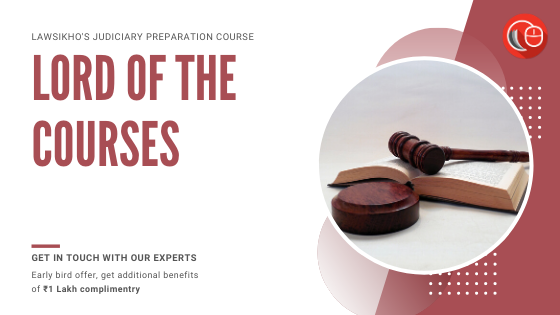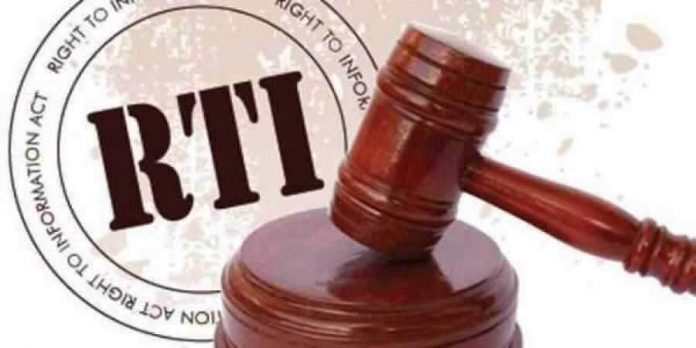This article is written by Niharika Singh, from Ansal University, Gurgaon and is edited by Gitika Jain. It is solely dealing with a few Supreme Court judgements in India, concerning the Right to Information Act, 2005, and also the legal perspectives of the Act.
Table of Contents
Introduction
Mahatma Gandhi once said, “the real Swaraj will come not by the acquisition of authority by a few, but by the acquisition of capacity by all to resist authority when abused”. We can state that he surely did not imagine, at that point in time, that India would have to make a law in order to empower people for something as basic as to seek information. Understandably, seeking information about the development of the country is one of the basic rights of the country’s citizens, yet India had to enact a law for the same. India, being a democracy, requires an informed citizenry as well as transparency of information as this is vital for the functioning of a democracy, and also to contain corruption, hold governments accountable etc.
The term ‘Information’ has been derived from the Latin words ‘formation’ and ‘forma’ which mean giving shape to something, and forming a pattern, respectively. Information is said to be needed importantly by human beings in order to actually realize their full potential in social, political, and economic activities. Information is also a public resource that is collected and sorted by governments in trust for people.
The date of 12th October 2005 will always be remembered quite fondly as the beginning of a new journey and era altogether of empowerment for the common people of India. The date is often incorrectly referred to as 13th October 2005, but the Right to Information (RTI) Act, 2005 came into force on the midnight between 12th and 13th October. The official date is considered to be 12th October 2005. The RTI Act was passed by the Parliament on 15th June 2005 but came into force only on 12th October 2005. It was enacted by the Lok Sabha on May 11, 2005, and later by the Rajya Sabha on May 12, 2005. It received the assent of the President of India on June 15, 2005. The Act is applicable nationwide, except for in the state of Jammu and Kashmir- which is covered under State-level law. In India, information disclosure was restricted by the Official Secrets Act, 1923 and various other special kinds of laws that were passed, but the new RTI Act now relaxes those.
The RTI Act is also referred to as a Central Legislation “to provide for setting out the particular regime of right to information for citizens”, it enables Indians to exercise their Fundamental Right of Speech and Expression. The Act is known to provide for setting out the practical regime of right to information in order to enable citizens to secure access to all information under the control of public authorities. It promotes transparency and accountability in the working of every public authority. The Act mandatorily requires every public authority to computerize their records and publish certain categories of information so that there is less need for citizens to request information formally.
Aim
The main aim of the RTI Act 2005, which is a law enacted by the parliament of India, was to give the citizens access to all records of the State and Central Government. It is said to be a codification of the important fundamental right (Article 19 of the Indian Constitution) of citizens. In the Act, its rules define a format for requesting information, a period for the authorities within the information must be provided, a method of giving the information, some charges that apply for requesting information, and lastly a list of organizations that are exempted from giving any information. The RTI Act is otherwise applicable to all constitutional authorities including the executive, legislation, and judiciary.
We can assume that the formal recognition of a legal Right to Information in India occurred more than two decades ago, even before the legislation was finally enacted by the parliament. To support this, the Supreme Court of India ruled in the State of UP v. Raj Narain can be used. It was held in this case that the Right to Information is suggested, though not directly expressed in the right to freedom of speech and expression which is contained in Article 19 of the Constitution.
Appointment of officers
An important task that is clearly stated in the Act is that Chief Information Officers and other Commissioners have to be mandatorily appointed, at Central as well as State levels. It is also mandatory, for these officers that are appointed for these positions, to have a background of social service, academics, journalism, jurist, etc.
The primary stakeholders in the RTI Act are –
- Citizens;
- Central and State Information Commissions; and
- Public authorities that comprise Public Information Officers and the Appellate.
Objectives of the Right to Information Act 2005
The RTI Act has helped to achieve the four elements of good governance – transparency, accountability and predictability. Right to Information is also the key element to a successful democracy, it is said to be oxygen for democracy. Information to citizens leads to openness, integrity and accountability. Therefore, the main objectives of the RTI Act are as follows:
- To reduce corruption, etc. by promoting accountability in the functioning of every public authority.
- To preserve democratic ideals, the Act promotes the practice of revelation of information.
- To provide a legal framework to empower citizens with their democratic Right to access information which is under the control of public authorities.
- To ensure accountability and promote transparency.
- To harmonise and settle any kind of conflicting interest and priorities in operations of the government, and use of resources by it.
Two features that make RTI a unique Act
1. The RTI Act was a Right-based enactment
- RTI Act 2005 is a right-based enactment done by the Government of India.
- The Act, or laws, that provide specific rights to the citizens of the country are known as right-based enactments.
- Several right-based enactments have been enforced in the tenure of the UPA Government.
- For example – Right to Employment (MGNREGA) in 2005, and also, Right to Education which became operational in 2009.
2. Enactment due to the pressure of society
- This Act is one of those few Acts that has been enacted with the active involvement of pressure groups, etc. in society.
- Similar to the Lokpal Act of 2013, the government passed the RTI Act due to its demand from the beginning.
- Even though the Right to Information was described as an essential part of freedom of speech and expression under Article 19 way back in 1986, in a Supreme Court Judgement, but the UPA government could only decide to bring it in 2004.
- The Act involved all the experts from the field to give their suggestions on the draft of the New Right to Information Act.
Legal perspective of the right to information
RTI has thoroughly deepened the roots of Indian democracy. It has spread very well and empowered the citizens greatly. Individual citizens have now become the proper vigilance monitors of government and public servants due to greater transparency and accountability that has been brought about. Citizens have uncovered many scams and exposed corruption through this. The Act is slowly moving the nation from being an elective democracy, which it has been, to now being a participatory democracy where active citizenship is now practised completely. The RTI Act is said to have been making the nation grow healthily.
The Right to free speech and publishing of information, etc. all arise from Article 19(1) from the Constitution. The Right to Information was only recognised across the nation in 2005 after it was enacted as a law. The Right includes a completely open government.
Citation: Act No. 22 of 2005
Territorial Extent: Whole of India, except the State of Jammu and Kashmir
Enacted by: Parliament of India
Date Enacted: 15/06/2005
Date Assented: 15/06/2005
Official Date of Enactment: 12/10/2005
Procedure to apply for an RTI Application: Either it can be claimed through writing more, or else electronic mode.
Key provisions of the RTI Act
- Section 1(2) – It is clearly stated here that the RTI Act extends to the whole nation, except for the State of Jammu and Kashmir, as it has its state-level governance.
- Section 2 (f) – This section exhaustively defines the meaning of information. It includes the fact that information may include anything related to or including Records, Documents, Memos, E-Mails, Opinions, Advice, Press releases, Circulars, Orders, Logbooks, Contracts, Reports, Papers, Samples, etc.
- Section 2 (h) – Defines the meaning of public authority as any authority or bodies under the Constitution of India, which include all state and central government monitored institutions as well. The civil societies that are indirectly, or directly, funded by the public funds are also included in.
- Section 2 (j) – ‘Right to Information’, as given in this Act, means the Right to access any information that is under the control of any public authority. The Section further defines what else the public has access to through this Act.
- Section 4 – Deals with the maintainability and proactive disclosure of information. It states that the Act requires “suo moto disclosure of information” by every public authority. However, what this section deals with has some-what not become satisfactory.
- Section 6 – It simply prescribes an easy procedure for securing information through the Act.
- Section 7 – This section has prescribed a time for the PIO’s to give out the information requested by the public. It gives a time frame of 30 days in most cases.
- Section 8 – This section and all subsections that are contained in it describe how only minimum information may be exempted from disclosure to the public. It described what all may be exempted in a few cases, etc.
- Section 19 – Completely described the two-tier mechanism that exists for appeal.
- Section 20 – Provides penalty fees, etc. in case there is a delay in giving out information or the information is distorted or wrong in any situation.
- Section 23 – This states that the lower courts are barred from entertaining any suits or applications in this regard. However, the writ jurisdiction of the Supreme Court and High Courts are not affected in any way. They remain the same, under article 32 and 225 of the Constitution.
However, it is completely understood that the RTI Act of 2005 did not create a new bureaucracy for implementing the laws in any way, rather it changed the functionality of the government and its officials completely. From earlier having an attitude of secrecy, to now an attitude of openness and sharing, the Indian Government has moulded itself completely in this regard. Through this Act, the Information Commission of the country was indirectly empowered, and it was deliberately made the highest authority in the country.
The Commission has the authority to order any office in the nation to provide any kind of information as per the provisions in the Act, allowing the commission to fine any official who did not follow the mandate. The RTI Act has proven to be empowering to the poor and the weaker sections of our society as it allows them to get information about various schemes, public policies and actions, that lead to their welfare. The Act has been seen as the key to strengthening participatory democracy in India and has removed unnecessary secrecy from the government functionaries, leading to improved decision making by public authority.
Recent amendments in the RTI Act
- There was an RTI amendment bill, 2013 passed in 2013, that removes political parties from the definition of public authorities, and hence it removes political parties from the framework of the RTI Act too.
- The draft provision of 2017, that provided for closure of a case in case of death of an applicant, may also affect the RTI Act very soon but has not yet been passed.
- The proposed RTI Amendment Act, 2018 is aiming at changing the authority of deciding tenures and salaries, etc of all central information commissioners. This has been enshrined within the Act till now, but this has aimed at changing the authority of the same and giving the Centre the power. The autonomy and independence of the Act will be hampered due to this.
- The Act has also proposed to change the 5-year tenure, which is provided in the RTI Act 2005, to as much prescribed by the Government. The 2018 Amendment Act will completely dilute the autonomy as well as the independent status of the RTI Act 2005. Due to this Amendment, the government will also gain a certain amount of power and hold on the RTI Act.
Landmark cases on the right to information decided by the Supreme Court of India
CBSE v. Aditya Bandopadhyay & Ors. (2011)
Issue
In CBSE v. Aditya Bandopadhyay & Ors. (2011), the main issue before the Supreme Court was whether or not an examinee’s right to information under the RTI Act 2005 includes the right of for the student to view and inspect his/her evaluated answer books in a public examination, and also whether or not the examinee has the right to take certified copies of the same. The examining body, which was CBSE, had claimed that it held the information without giving it out to the student in a relationship of trust (fiduciary relationship). CBSE claimed that this was exempted under Section 8(1)(e) of the RTI Act.
Observation of Court (Judgement)
Para 18 of the Judgement reads as follows – “Section 22 of RTI Act provides that the all provisions of the RTI Act will have an effect, notwithstanding anything that is not consistent or else contained in any other law for the time in force. Therefore the provisions of the RTI Act will continue to prevail over the provisions of the bye-laws/rules of the examining bodies in regard to all exams. As a result, unless and until the examining body is able to demonstrate that the answer-books fall under the exempted category of information described in clause (e) of section 8(1) of RTI Act, the examining body will be bound to provide access to an examinee to inspect and take copies of his evaluated answer-books, even if such inspection or taking copies is barred under the rules/bye-laws of the examining body governing the examinations.”
Analysis of the Judgement
- It was held by the Court in the final verdict that as the examining body (CBSE) did not hold any type of fiduciary relationship with the examinees or examiners, it will not be exempted.
- The Supreme Court ordered CBSE for the information to be provided.
- The Court held that the corrected answer sheets were information to be provided to students who seek them under the RTI Act.
- The observations that were made by the Court, stated in Para 37 above, were completely uncalled for, and there does not seem to be any cause or reason for those observations.
- Under Para 37, labelling citizens as oppressors and intimidators is highly unacceptable.
- The remarks that were made in Para 37 of the judgement are unexplainable by any facts and they certainly run parallel to all the earlier decisions on the RTI Act.
- Unfortunately, the Supreme Court could make such remarks, as mentioned in Para 37 of the Judgement, especially concerning a fundamental right of citizens.
 Girish Ramchandra Deshpande v. Central Information Commission & Ors. (2013)
Girish Ramchandra Deshpande v. Central Information Commission & Ors. (2013)
Issue
In Girish Ramchandra Deshpande v. Central Information Commission & Ors. (2013), whether or not the information like movable/immovable property, assets liabilities and information with reference to the career of a public servant may be denied. The defendant argued that the information which was sought for is qualified to be personal information as exempted in Section 8(1)(j) of the RTI Act.
Observation of the Court (Judgement)
Para 14 – “The details disclosed by a person in his income tax returns are “personal information” which stand exempted from disclosure under clause (j) of Section 8(1) of the RTI Act, unless involves a larger public interest and the Central Public Information Officer or the State Public Information Officer or the Appellate Authority is satisfied that the larger public interest justifies the disclosure of such information.”
Analysis of the Judgement
- It was held by the Court that all the information that was being requested, including copies of all memos and orders of punishment, assets, income tax returns, and details of gifts received etc. are all personal information of the public servant.
- The Court held that all this information is personal information of the public servant under clause (j) of Section 8(1) of the RTI Act.
- The information was hence exempted and ordered not to be furnished under the RTI Act.
- We can conclude by saying that the judgement has expanded the scope of Section 8(1) (j).
- In its verdict, it shows how the Court has gone far beyond any discussion or interpretation of the law whatsoever.
- In the entire verdict, the only justification given for denial of information is that the court agrees with the decision of the Central Information Commission.
- Furthermore, two judgments that seem to be contrary to this one are – R Rajagopal and Anr. v. State of Tamil Nadu, 1994 and also 2. The Supreme Court judgement in the ADR/PUCL case, 2002.
Karnataka Information Commissioner v. PIO
Issue and observations of the Court
- Under the case of Karnataka Information Commissioner v. PIO, certified copies of some information and guidelines along with rules in respect to scrutiny and classification of writ petitions were requested by an RTI applicant, along with procedures followed by the Karnataka High Court in respect of Writ Petition Nos. 26657 of 2004 and 17935 of 2006.
- The information was refused upon by the PIO on the grounds that the RTI applicant must seek the information under the rules of the Karnataka High Court only.
- This matter later went to the State Information Commission.
- The State Information Commission disagreed with the PIO.
- It ordered for information to be provided to the applicant under the RTI Act.
- PIO later challenged the Commission’s order in the High Court, which names the applicant as the respondent in this case.
- The commission’s order was set aside by the Karnataka High Court.
- A Petition was filed by an Information Commissioner and the Commission challenged this order before the Supreme Court.
- The Supreme Court later considered the petition, being filed by an Information Commissioner to be offensive.
- It said that the commissioner, as well as the commission, had no ‘locus standi’.
- It was later held by the Court that both, the commissioner and commission, were wasting public money by challenging the High Court Order.
- A cost of ₹10,000 was imposed as a fine on the commission, as a harsh snub.
Analysis of the Judgement
- Here, it is worth mentioning that the Supreme Court itself had once earlier accepted the Chief Information Commissioner (Manipur) in one judgement as to the Petitioner of the case.
- Many High Courts have also previously named the Commission as the party in many petitions that were filed earlier, challenging the decision of the Information Commission.
- Hence, it does not appear to be correct for the Supreme Court to take umbrage in this case at the commission for approaching it as a petitioner.
- More importantly, the overriding effect of the RTI given in Section 22 of the RTI Act was not addressed at all by the Supreme Court.
- This Section’s provisions were brushed away completely.
- This judgement has had a huge impact on the Information Commissions.
- Post this verdict, the Commissions have become more subservient to the Courts.
- The harsh snub judgement has completely silenced the Commission from questioning the Courts.
- If the apex courts snub the authorities in such matters, it damages the rule of law as well.
- Authorities require some extent of respect in order to enforce the laws, which the authorities undoubtedly lose with these negative judgements.
A global view on right to information
- Over 50 countries in the world now have freedom of information and right to information to their citizens.
- 15-20 countries are actively considering adopting this process in its governance.
- All these nations are joined together by a growing number of inter-governmental bodies that have established FOI policies.
- These inter-governmental bodies include the World Bank, the European Union and UNDP, etc.
- The effect on movements for open government worldwide was catalysed thoroughly by the UN’s Universal Declaration of Human Rights, 1948.
- Many democratic countries around the world have already taken legislative actions to give their citizens a right to access information that is in possession of the government and its agencies.
- Freedom of Information Act, 1966 was passed in the USA, and later extensively amended in 1974, and again in 1976, 1983.
- The Access to Information Act was enacted in Canada, in 1982.
- Australia and New Zealand have also passed similar legislation(s) in 1982, 1983, respectively.
- The right to freedom of speech and expression has also been listed in the fundamental Rights listed in Part III of the Constitution.
- However, we can state that freedom of information legislation is not a new concept to the world.
- It has been in existence since the 18th century, as evident in the case of Sweden.
- The history of RTI has always been a struggle between the power of the state and that of the civil societies of the state.
- In many regions, the enactment of RTI has resulted only from the fall of the authoritarian regime.
Conclusion
We can conclude by saying that until the introduction of the Right to Information Act, secrecy was completely maintained and information was only the property of the people on the ruling side. Now, with the enactment of the Act, people have got the opportunity to take, see, and check any information that they desire except what is exempted under the Act. As we can see through the Supreme Court Judgements, the Act has empowered the Indian democracy thoroughly. At the same time, looking at the judgements, we can also conclude by saying that a lot of awareness campaigns and awareness programs need to be enforced by the government in order to fully utilize the act to combat the corruption that still exists in the Indian Democracy, otherwise the RTI Act will also soon become just like any other act.
RTI definitely has helped in better governance and leading. even though it has been more than 7 years now since the passing of this act it has not been used to its fullest power because of reasons like corruption, threat, etc. Since the time it has been passed, there has been no amendments even though there has been urgent need of change. RTI has been introduced because many of the people’s common distress and helplessness is not traceable because of the lack of enough information and knowledge which delay the process of decision making. The main spirit of the act can best be described as that there is no democracy without informed citizens.
The Indian RTI Act has been lauded all around the world as it is completely at par, or may even be better, than most of the similar laws and legislations enacted by countries in the Western world.
References
- https://www.longdom.org/open-access/right-to-information-act-in-indiaan-overview-2332-0761-1000207.pdf
- https://elibrary.worldbank.org/doi/abs/10.1596/978-1-4648-0879-1_ch6
- https://www.drishtiias.com/to-the-points/paper4/right-to-information-1
- https://www.slideshare.net/superfun/right-to-information-15400722
- https://www.cambridge.org/core/books/freedom-of-information/conclusion/D54BDE011E70C5650176578EE8F7CE51
LawSikho has created a telegram group for exchanging legal knowledge, referrals and various opportunities. You can click on this link and join:












